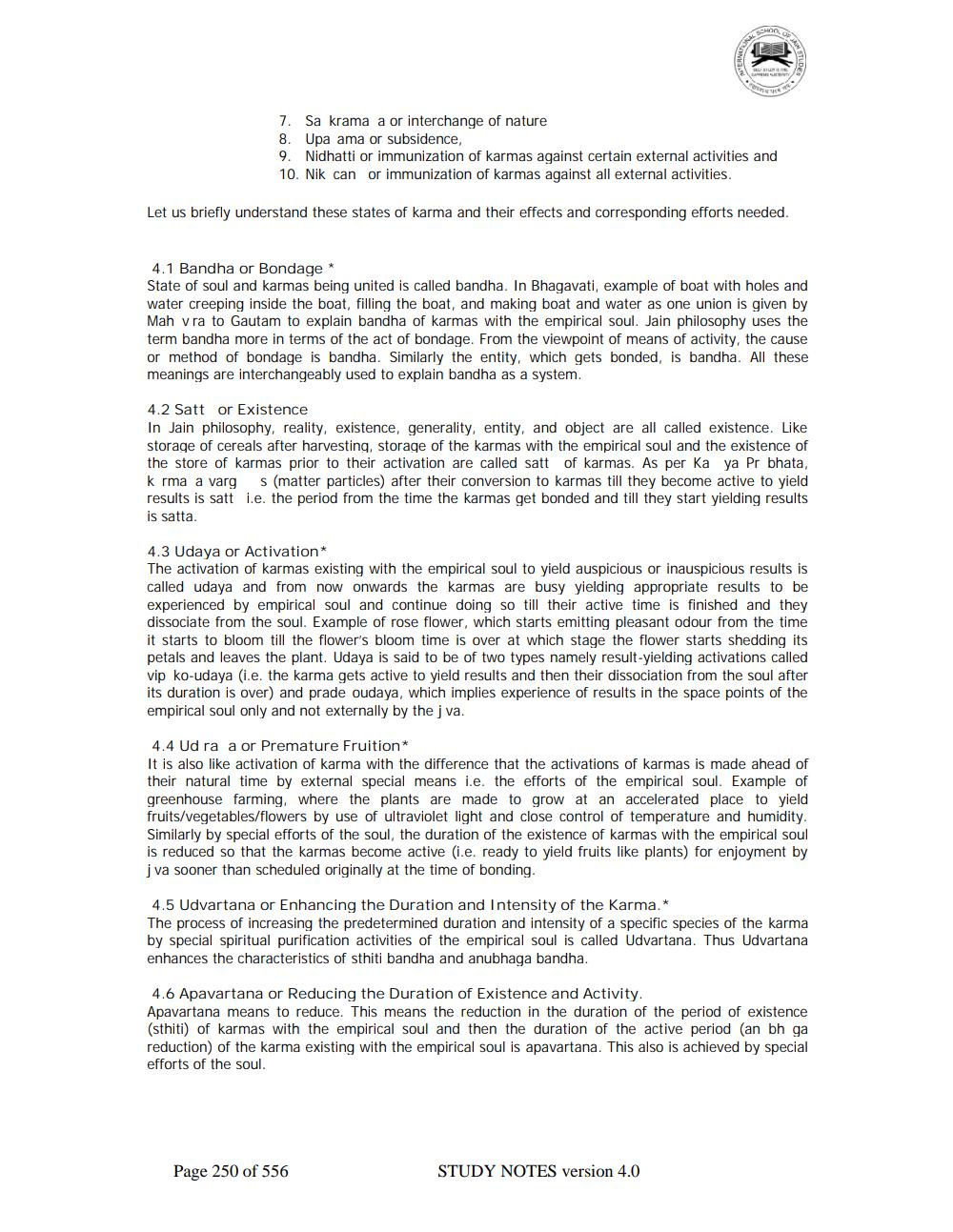________________
7. Sa krama a or interchange of nature 8. Upa ama or subsidence, 9. Nidhatti or immunization of karmas against certain external activities and 10. Nik can or immunization of karmas against all external activities.
Let us briefly understand these states of karma and their effects and corresponding efforts needed.
4.1 Bandha or Bondage * State of soul and karmas being united is called bandha. In Bhagavati, example of boat with holes and water creeping inside the boat, filling the boat, and making boat and water as one union is given by Mah vra to Gautam to explain bandha of karmas with the empirical soul. Jain philosophy uses the term bandha more in terms of the act of bondage. From the viewpoint of means of activity, the cause or method of bondage is bandha. Similarly the entity, which gets bonded, is bandha. All these meanings are interchangeably used to explain bandha as a system.
4.2 Satt or Existence In Jain philosophy, reality, existence, generality, entity, and object are all called existence. Like storage of cereals after harvesting, storage of the karmas with the empirical soul and the existence of the store of karmas prior to their activation are called satt of karmas. As per ka ya Pr bhata, k rma a varg s (matter particles) after their conversion to karmas till they become active to yield results is satt i.e. the period from the time the karmas get bonded and till they start yielding results is satta.
4.3 Udaya or Activation* The activation of karmas existing with the empirical soul to yield auspicious or inauspicious results is called udaya and from now onwards the karmas are busy yielding appropriate results to be experienced by empirical soul and continue doing so till their active time is finished and they dissociate from the soul. Example of rose flower, which starts emitting pleasant odour from the time it starts to bloom till the flower's bloom time is over at which stage the flower starts shedding its petals and leaves the plant. Udaya is said to be of two types namely result yielding activations called vip ko-udaya (i.e. the karma gets active to yield results and then their dissociation from the soul after its duration is over) and prade oudaya, which implies experience of results in the space points of the empirical soul only and not externally by the j va.
4.4 Udra a or Premature Fruition* It is also like activation of karma with the difference that the activations of karmas is made ahead of their natural time by external special means i.e. the efforts of the empirical soul. Example of greenhouse farming, where the plants are made to grow at an accelerated place to yield fruits/vegetables/flowers by use of ultraviolet light and close control of temperature and humidity. Similarly by special efforts of the soul, the duration of the existence of karmas with the empirical soul is reduced so that the karmas become active i.e. ready to yield fruits like plants) for enjoyment by j va sooner than scheduled originally at the time of bonding.
4.5 Udvartana or Enhancing the Duration and Intensity of the Karma.* The process of increasing the predetermined duration and intensity of a specific species of the karma by special spiritual purification activities of the empirical soul is called Udvartana. Thus Udvartana enhances the characteristics of sthiti bandha and anubhaga bandha.
4.6 Apavartana or Reducing the Duration of Existence and Activity. Apavartana means to reduce. This means the reduction in the duration of the period of existence (sthiti) of karmas with the empirical soul and then the duration of the active period (an bh ga reduction) of the karma existing with the empirical soul is apavartana. This also is achieved by special efforts of the soul.
Page 250 of 556
STUDY NOTES version 4.0




